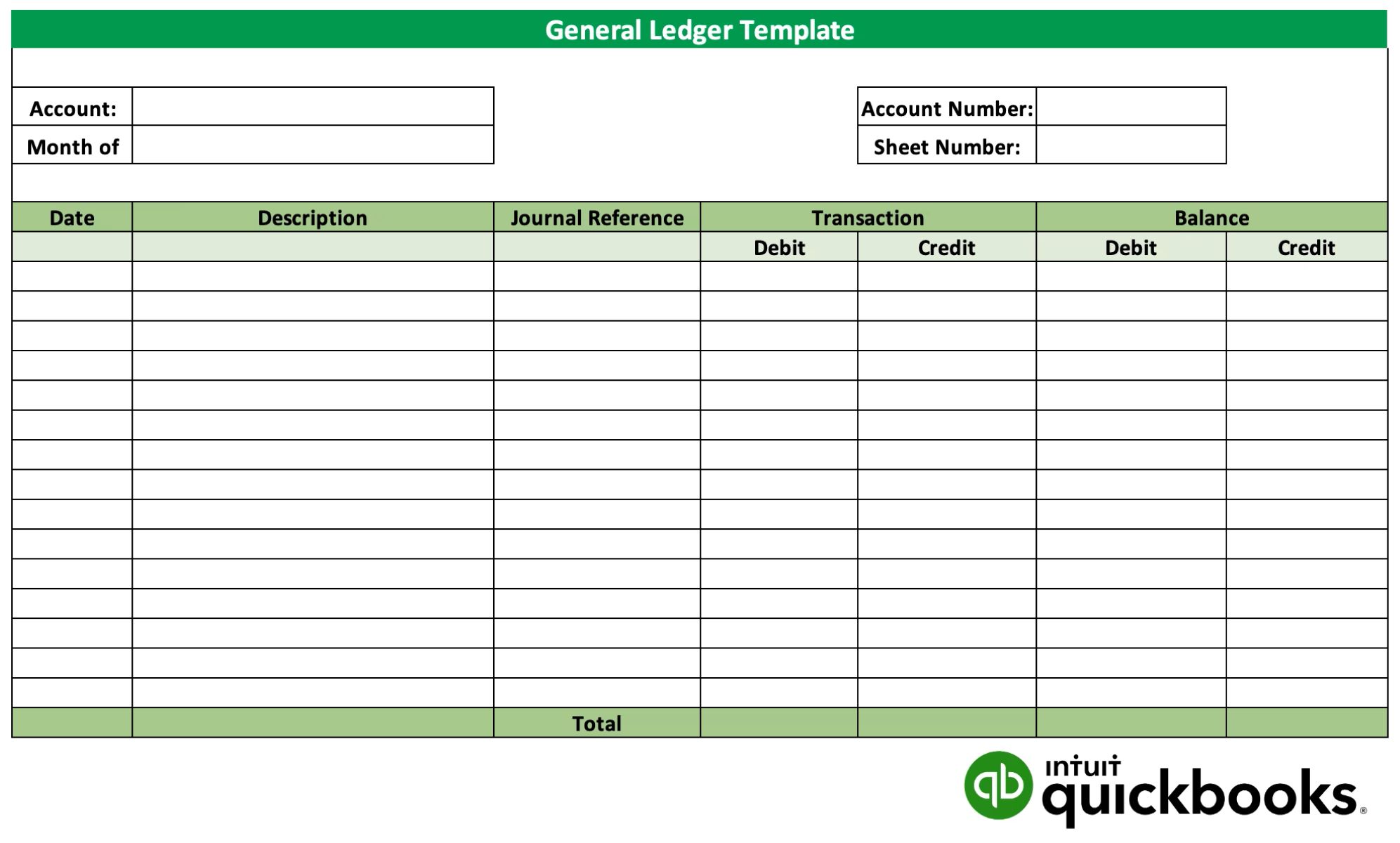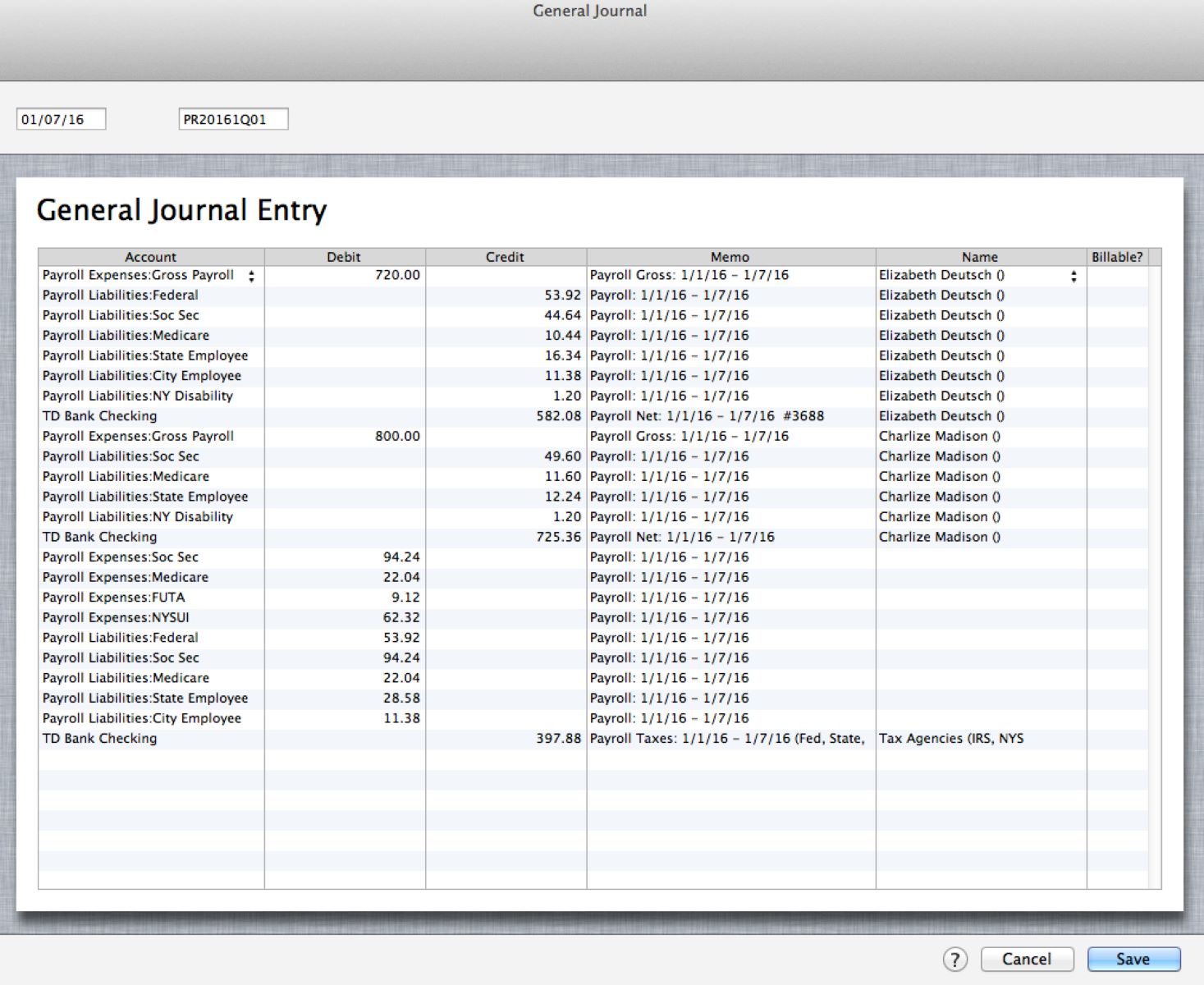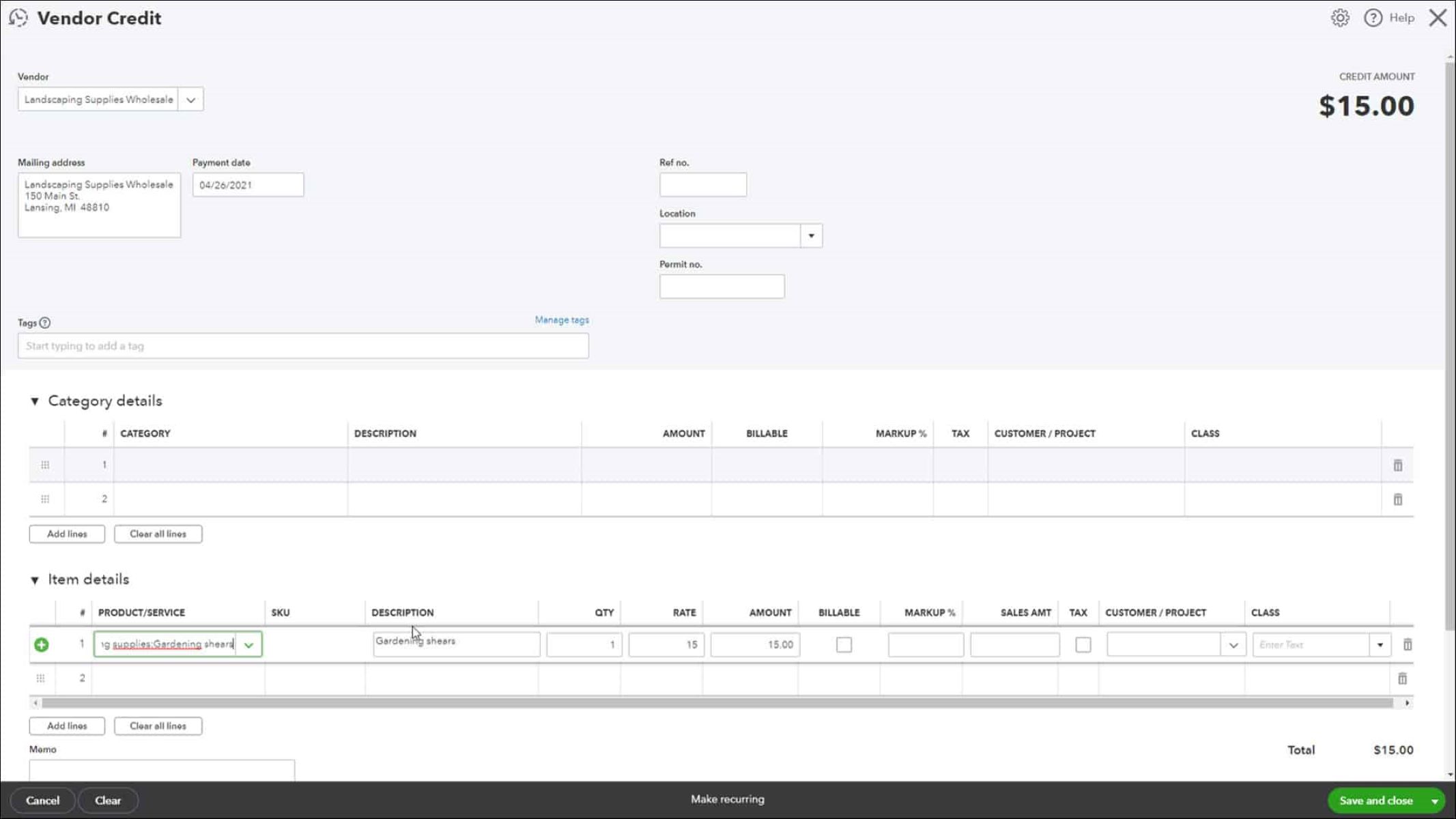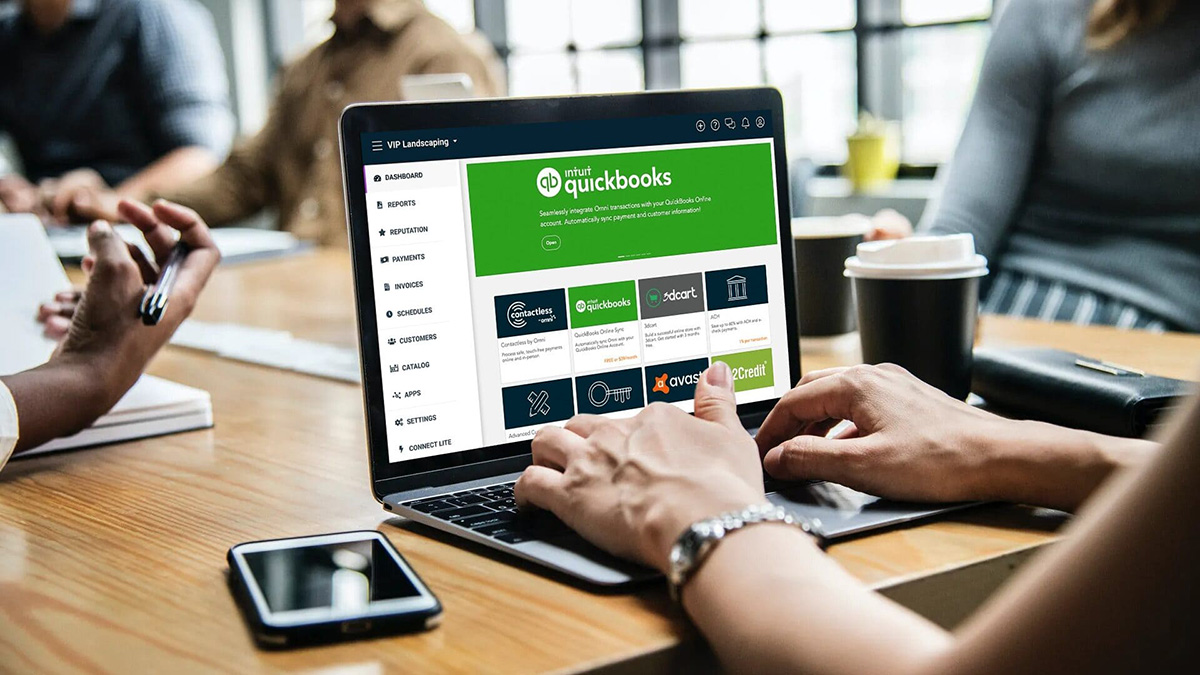Introduction
When setting up a new company in QuickBooks, one of the most important tasks is to enter the opening balances. Opening balances represent the financial position of your business at the start date of using QuickBooks, and they include various accounts such as bank accounts, credit card accounts, vendor and customer balances, inventory, fixed assets, equity and loan balances, as well as sales tax.
Entering accurate opening balances ensures that your financial statements are accurate from the beginning and helps you track your business’s financial performance effectively. In this article, we will guide you through the process of entering opening balances in QuickBooks, ensuring that you have a solid foundation for managing your company’s finances.
This step-by-step guide will provide you with detailed instructions for entering opening balances, covering various account types. By following the steps outlined in this article, you can ensure that your QuickBooks company file accurately reflects the financial position of your business at the start date of using the software.
Keep in mind that entering opening balances correctly is crucial for the accuracy of your financial records. Any errors or omissions in the opening balances can lead to discrepancies in your financial statements and affect the overall integrity of your accounting data. Therefore, it is essential to pay close attention and gather all the necessary information before proceeding with entering the opening balances.
Step 1: Set Up Your Company File
Before you can enter opening balances in QuickBooks, you need to ensure that your company file is properly set up. This involves creating a new company file or selecting an existing company file to work with. Follow these steps to set up your company file:
- Open QuickBooks and click on the “Create a new company” option if you are starting a new business. If you already have an existing company file, click on the “Open or Restore an Existing Company” option.
- Follow the prompts to enter the necessary information about your business, such as your business name, address, industry, fiscal year, and tax ID number. Fill in these details accurately as they will be used in your financial reports and documents.
- Choose the accounting method that best suits your business: cash basis or accrual basis. The cash basis method records income and expenses when money is actually received or paid, while the accrual basis method records income and expenses when they are earned or incurred, regardless of when the money is exchanged.
- Select a chart of accounts that matches your business needs. The chart of accounts is a list of all the accounts used to categorize your business transactions. QuickBooks provides a default chart of accounts, but you can customize it to match the specific accounts you use in your business.
- Set up your company preferences, such as the default tax form, language, and date format. These preferences can be modified later if needed.
- Finally, save your company file in a secure location on your computer or cloud storage. It is recommended to regularly back up your company file to prevent data loss.
Once you have successfully set up your company file, you are ready to proceed with entering the opening balances for your various accounts. Make sure to have all the necessary information and documentation on hand to ensure accuracy and completeness in this process.
Step 2: Gather the Necessary Information
Before you can enter opening balances in QuickBooks, it’s essential to gather all the necessary information for each account. This information will ensure that the opening balances accurately reflect the financial position of your business.
Here are some key pieces of information you’ll need to collect:
- Bank Accounts: Gather the bank statements as of the start date in QuickBooks. This will include the beginning balance, any outstanding checks, and deposits.
- Credit Card Accounts: Obtain the credit card statements with the balances as of the start date. Make note of any outstanding charges or payments that need to be recorded.
- Vendor and Customer Balances: Compile a list of all outstanding bills and invoices as of the start date. Include details such as the vendor or customer name, outstanding balance, and any additional payment terms.
- Inventory: Take stock of your inventory and determine the quantity and value of each item on hand as of the start date. Ensure that you have accurate records of the cost and value of your inventory.
- Fixed Assets: Identify any fixed assets that your business owns, such as equipment or property. Gather the purchase invoices, depreciation information, and the current value of each asset.
- Equity and Loan Balances: Make a record of any investments or loans made to or by your business. Gather supporting documentation, such as loan agreements or investment certificates.
- Sales Tax: Determine the sales tax liabilities as of the start date. This includes any sales tax that has been collected but not yet remitted to the appropriate tax authority.
By gathering all this necessary information, you will have a complete picture of your business’s financial position at the start date. This will enable you to enter accurate opening balances in QuickBooks and ensure that your financial records are reliable and up-to-date.
Step 3: Enter Opening Balances for Bank Accounts
Entering opening balances for your bank accounts in QuickBooks is crucial for ensuring that your financial records are accurate right from the start. To enter opening balances for your bank accounts, follow these steps:
- Open QuickBooks and go to the “Banking” menu.
- Select “Chart of Accounts” to access your list of bank accounts.
- Click on the bank account for which you want to enter the opening balance.
- Select “Edit Account.”
- In the “Edit Account” window, enter the opening balance date and the balance amount as of that date. This information should be obtained from your bank statement as of the start date.
- If there are any outstanding checks or deposits that have not yet cleared the bank, you can enter those in the relevant fields. Otherwise, leave these fields blank.
- Click “Save” to save the opening balance for the bank account.
- Repeat these steps for each bank account you have.
By entering the opening balances for your bank accounts, you are ensuring that your cash balances in QuickBooks match your actual bank balances. This step is crucial for reconciling your bank accounts and accurately tracking your cash flow.
It’s essential to double-check the accuracy of the opening balance amounts and dates before saving them in QuickBooks. Any discrepancies can lead to discrepancies in your financial records and potentially cause issues when reconciling your bank accounts in the future.
Now that you have entered the opening balances for your bank accounts, you can move on to entering the opening balances for other accounts, such as credit cards, vendor and customer balances, inventory, fixed assets, equity and loans, and sales tax.
Step 4: Enter Opening Balances for Credit Card Accounts
Entering opening balances for your credit card accounts in QuickBooks is an important step to ensure accurate financial records. To enter opening balances for your credit card accounts, follow these steps:
- Open QuickBooks and navigate to the “Banking” menu.
- Select “Chart of Accounts” to access your list of accounts.
- Identify the credit card account for which you want to enter the opening balance.
- Click on the credit card account and select “Edit Account.”
- In the “Edit Account” window, enter the opening balance date and the balance amount as of that date. This information should be obtained from your credit card statement as of the start date.
- If there are any outstanding charges or payments that have not yet been reflected on your credit card statement, you can enter them in the relevant fields. Otherwise, leave these fields blank.
- Click “Save” to save the opening balance for the credit card account.
- Repeat these steps for each credit card account you have.
By entering the opening balances for your credit card accounts, you ensure that your credit card liabilities in QuickBooks match your actual credit card balances. This step is crucial for accurately tracking your credit card expenses and managing your overall business liabilities.
It’s important to verify the accuracy of the opening balance amounts and dates before saving them in QuickBooks. Any discrepancies can lead to inconsistencies in your financial records and may affect your ability to reconcile credit card accounts in the future.
Now that you have entered the opening balances for your credit card accounts, you can proceed to enter the opening balances for other accounts, such as vendor and customer balances, inventory, fixed assets, equity and loans, and sales tax.
Step 5: Enter Opening Balances for Vendor and Customer Balances
Entering opening balances for your vendor and customer balances in QuickBooks is essential for accurately tracking your business’s financial relationships. To enter opening balances for your vendors and customers, follow these steps:
- Open QuickBooks and go to the “Vendor Center” or “Customer Center,” depending on whether you are entering balances for vendors or customers.
- Locate the specific vendor or customer for whom you want to enter the opening balance.
- Click on the vendor or customer name to access the details.
- In the vendor or customer profile, select “Edit” or “New Transaction,” depending on your version of QuickBooks and the specific actions available.
- Enter the appropriate opening balance for the vendor or customer, as of the start date. This balance should reflect any outstanding invoices or bills for vendors, or outstanding invoices or payments from customers.
- Save the changes or transaction to record the opening balance for the vendor or customer.
- Repeat these steps for each vendor or customer for whom you need to enter the opening balance.
By entering the opening balances for your vendor and customer balances, you ensure that your accounts payable and accounts receivable accurately reflect the outstanding balances at the start date. This step is crucial for maintaining accurate financial records and managing your business relationships effectively.
It’s important to double-check the accuracy of the opening balance amounts and dates before saving them in QuickBooks. Any discrepancies can lead to errors in your financial records, resulting in incorrect payment or billing activities.
Once you have entered the opening balances for your vendor and customer balances, you can proceed to enter the opening balances for other accounts such as inventory, fixed assets, equity and loans, and sales tax.
Step 6: Enter Opening Balances for Inventory
Entering opening balances for your inventory items in QuickBooks is essential for accurate tracking of your inventory levels and costs. To enter opening balances for your inventory, follow these steps:
- Open QuickBooks and go to the “Lists” menu.
- Select “Item List” to access your list of inventory items.
- Find the specific inventory item for which you want to enter the opening balance.
- Click on the inventory item and select “Edit Item” or “New Item,” depending on your version of QuickBooks and the specific actions available.
- In the item details window, enter the opening quantity and the cost per unit for the inventory item as of the start date.
- Save the changes to record the opening balance for the inventory item.
- Repeat these steps for each inventory item for which you need to enter the opening balance.
By entering the opening balances for your inventory items, you ensure that your inventory levels and cost of goods sold (COGS) are accurately reflected in QuickBooks. This step is essential for managing your inventory, tracking costs, and making informed decisions about purchasing and selling products.
Remember to verify the accuracy of the opening balance quantities and costs before saving them in QuickBooks. Any discrepancies can lead to inventory inaccuracies and affect your ability to manage inventory levels effectively.
Now that you have entered the opening balances for your inventory items, you can proceed to enter the opening balances for other accounts such as fixed assets, equity and loans, and sales tax.
Step 7: Enter Opening Balances for Fixed Assets
Entering opening balances for your fixed assets in QuickBooks is crucial for accurately tracking the value and depreciation of your assets. To enter opening balances for your fixed assets, follow these steps:
- Open QuickBooks and go to the “Lists” menu.
- Select “Fixed Asset Item List” to access your list of fixed assets.
- Identify the specific fixed asset for which you want to enter the opening balance.
- Click on the fixed asset and select “Edit Item” or “New Item,” depending on your version of QuickBooks and the specific actions available.
- In the item details window, enter the opening cost and the acquisition date for the fixed asset as of the start date.
- If applicable, enter the depreciation method and useful life of the asset. This information will be used to calculate depreciation expenses and the book value of the asset over time.
- Save the changes to record the opening balance for the fixed asset.
- Repeat these steps for each fixed asset for which you need to enter the opening balance.
By entering the opening balances for your fixed assets, you ensure that your financial records accurately reflect the value and depreciation of these assets. This step is crucial for proper financial reporting, tax purposes, and tracking the overall value of your business’s assets.
It’s important to double-check the accuracy of the opening balances, acquisition dates, and relevant depreciation details before saving them in QuickBooks. Any errors or discrepancies may affect your financial statements and depreciation calculations.
Once you have entered the opening balances for your fixed assets, you can proceed to enter the opening balances for other accounts, such as equity and loans, and sales tax.
Step 8: Enter Opening Balances for Equity and Loan Balances
Entering opening balances for your equity and loan balances in QuickBooks is crucial for accurately reflecting the financial position of your business. To enter opening balances for equity and loan accounts, follow these steps:
- Open QuickBooks and go to the “Chart of Accounts” menu.
- Locate the specific equity or loan account for which you want to enter the opening balance.
- Click on the account and select “Edit Account.”
- In the “Edit Account” window, enter the opening balance date and the balance amount as of that date. This information should be obtained from your financial records or loan statements.
- If there are any additional details or transactions related to the equity or loan account, such as capital contributions or loan repayments, enter those in the relevant fields.
- Save the changes to record the opening balance for the equity or loan account.
- Repeat these steps for each equity or loan account for which you need to enter the opening balance.
By entering the opening balances for your equity and loan accounts, you ensure that your financial statements accurately reflect the ownership and debt obligations of your business. This step is crucial for tracking your business’s financial health and obligations to equity partners or lenders.
It’s important to verify the accuracy of the opening balance amounts and dates before saving them in QuickBooks. Any discrepancies can lead to errors in your financial records and affect the overall integrity of your accounting data.
Now that you have entered the opening balances for your equity and loan accounts, you can proceed to enter the opening balances for other accounts, such as sales tax.
Step 9: Enter Opening Balances for Sales Tax
Entering opening balances for sales tax in QuickBooks is essential for accurately reporting and tracking your sales tax liabilities. To enter opening balances for sales tax, follow these steps:
- Open QuickBooks and go to the “Lists” menu.
- Select “Sales Tax Code List” to access your list of sales tax codes.
- Identify the specific sales tax code for which you want to enter the opening balance.
- Click on the sales tax code and select “Edit Item” or “New Item,” depending on your version of QuickBooks and the specific actions available.
- In the item details window, enter the opening balance for the sales tax code as of the start date. This balance should reflect any sales tax that has been collected but not yet remitted to the tax authorities.
- Save the changes to record the opening balance for the sales tax code.
- Repeat these steps for each sales tax code for which you need to enter the opening balance.
By entering the opening balances for your sales tax, you ensure that your financial records accurately reflect your sales tax liabilities. This step is crucial for properly calculating and remitting sales tax to the appropriate tax authorities.
It’s important to double-check the accuracy of the opening balance amounts before saving them in QuickBooks. Any errors or discrepancies can lead to incorrect sales tax calculations and potential issues with tax compliance.
Once you have entered the opening balances for your sales tax codes, you have completed the process of entering opening balances in QuickBooks. It’s recommended to review and finalize all the opening balances to ensure their accuracy and consistency with your financial records.
Step 10: Review and Finalize Opening Balances
After entering all the opening balances in QuickBooks, it is crucial to review and finalize them to ensure the accuracy and integrity of your financial records. Follow these steps to review and finalize the opening balances:
- Double-check the opening balances for each account to ensure they were entered correctly. Verify the amounts, dates, and any related transactions or details.
- Compare the opening balances in QuickBooks with your external records, such as bank statements, credit card statements, invoices, and loan agreements. Ensure that the balances match or closely align with the actual values.
- Run financial reports, such as a balance sheet or trial balance, to review how the opening balances are affecting your overall financial position. Look for any significant differences or inconsistencies that need to be addressed.
- Reconcile your bank and credit card accounts to ensure that the opening balances in QuickBooks match your actual bank and credit card balances. Resolve any discrepancies by correcting the opening balances or investigating and resolving any errors.
- If you identify any discrepancies or errors in the opening balances, make the necessary adjustments to rectify them. This may involve editing or deleting transactions, correcting account balances, or reaching out to relevant parties for clarification.
- Document any adjustments or changes made to the opening balances for future reference and audit purposes. Keep a record of the changes made, the reasons for the adjustments, and any supporting documentation.
- Once you are confident that the opening balances in QuickBooks accurately reflect your financial position, save and lock the opening balances to prevent accidental changes or alterations.
- Regularly monitor and reconcile your accounts to ensure ongoing accuracy and reliability of your financial records. Stay proactive in identifying and resolving any discrepancies that may arise.
By reviewing and finalizing the opening balances, you can have confidence in the accuracy of your financial records from the start. This ensures that your financial statements and reports provide a true reflection of your business’s financial position and performance.
Remember to keep backups of your company file and maintain proper documentation of your opening balances and any subsequent adjustments. These practices will help maintain the integrity and reliability of your financial records as you continue to use QuickBooks for your business’s accounting needs.
Conclusion
Entering opening balances in QuickBooks is a critical step in setting up your company’s financial records accurately. By following the step-by-step process outlined in this guide, you can ensure that your financial statements reflect the true financial position of your business from the start.
Each step, from setting up your company file to entering opening balances for different accounts such as bank accounts, credit cards, vendor and customer balances, inventory, fixed assets, equity and loans, and sales tax, has its own importance in creating a comprehensive and accurate financial picture.
Gathering all the necessary information, double-checking the accuracy of the balances, and finalizing the opening balances through careful review are crucial to ensuring the integrity of your financial records. Regular reconciliations and ongoing monitoring of your accounts will help maintain the accuracy of your records as your business evolves.
Remember to keep backups of your QuickBooks company file and maintain proper documentation of your opening balances and any subsequent adjustments. These practices will help safeguard your financial data and provide a trail of changes made to the opening balances over time.
With accurate opening balances in QuickBooks, you can confidently track your business’s finances, generate detailed financial reports, and make informed decisions for your company’s future growth and success.
Now that you’ve completed entering the opening balances, it’s time to explore the various features and capabilities of QuickBooks to streamline your accounting processes and effectively manage your business’s financial health and performance.

























